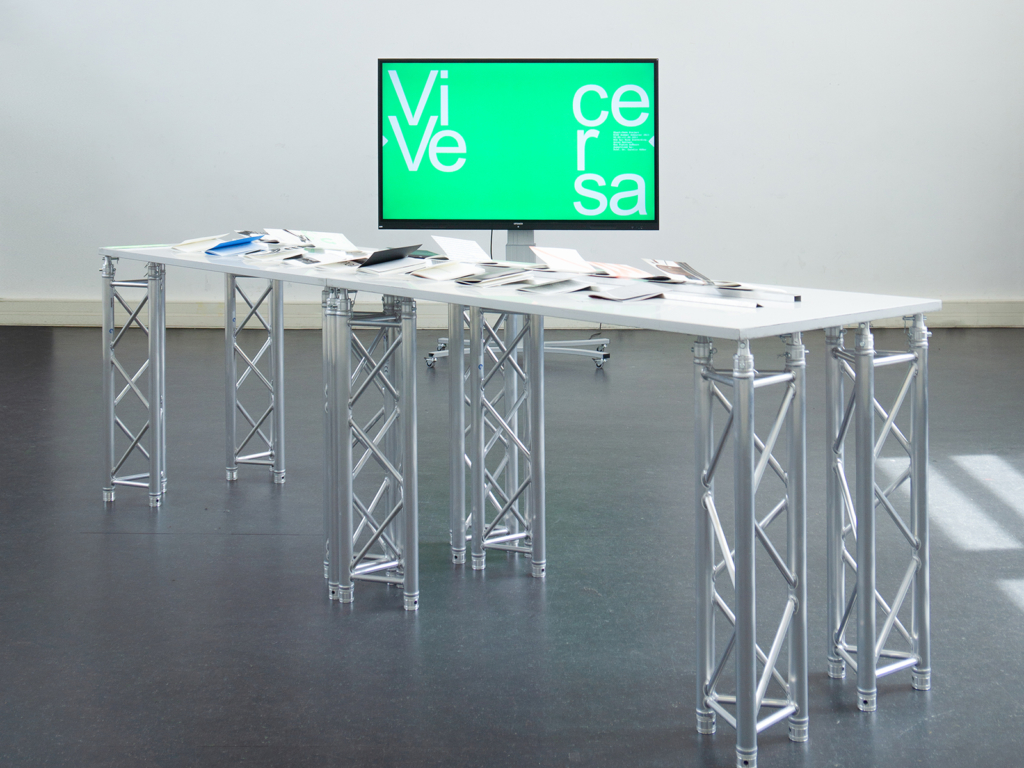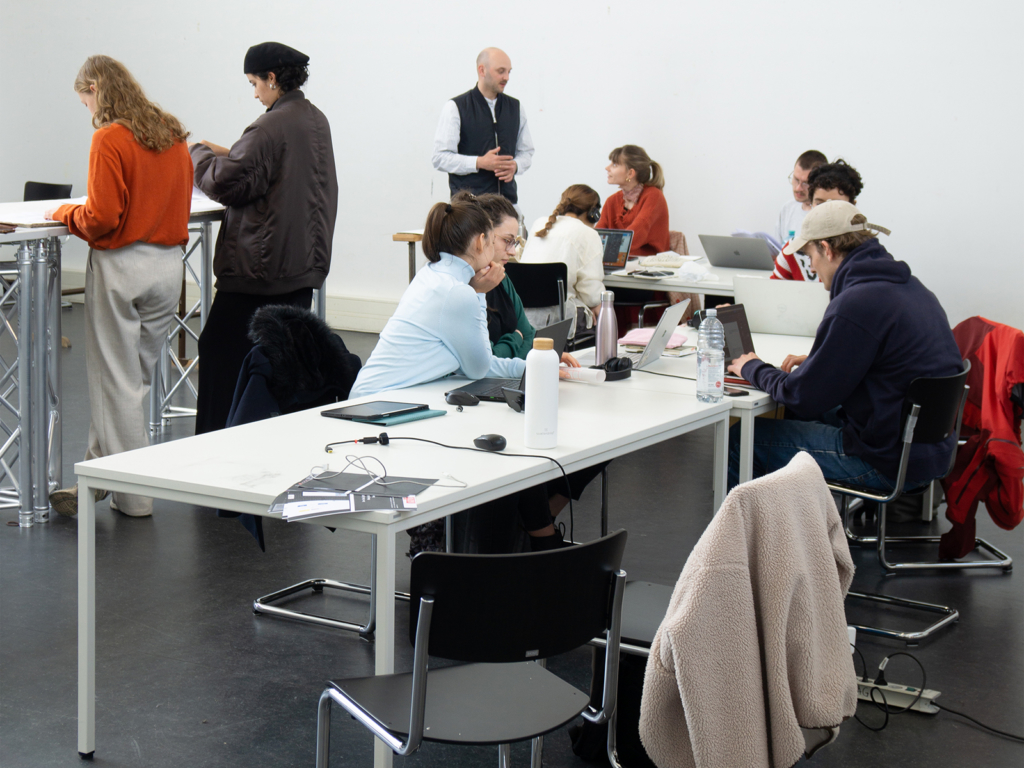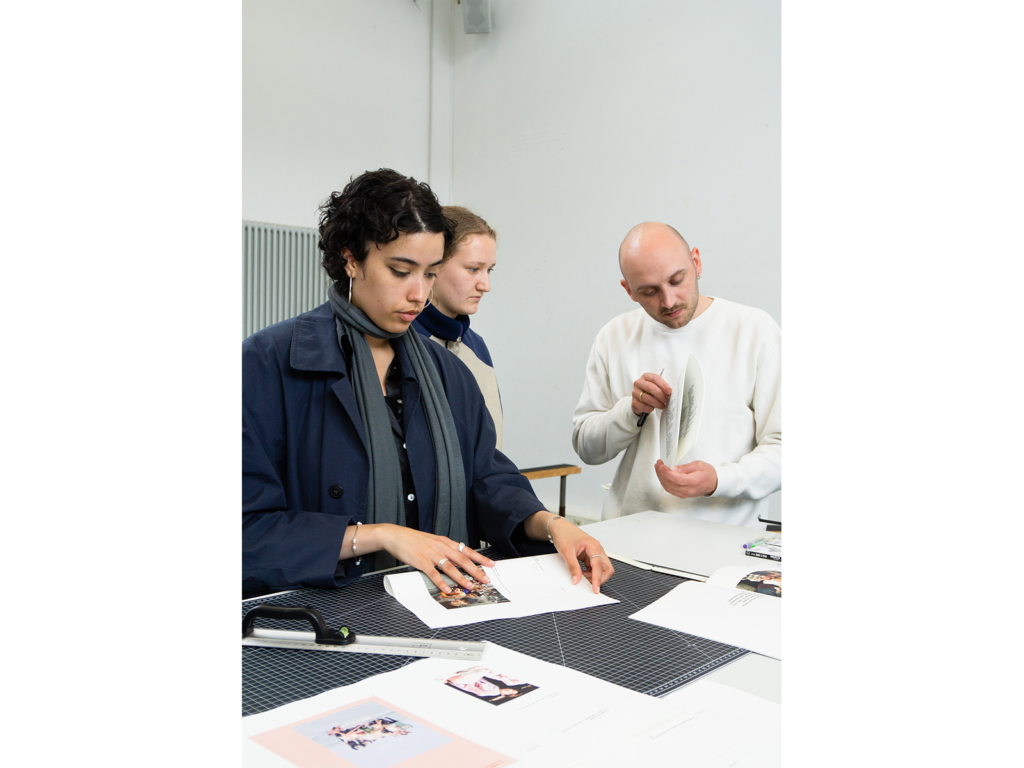The learning lab »Vice Versa« has set itself the goal of rediscovering the analog in the activity of writing and imaging in the digital age. The design researchers Max Hoffmann, Anton Rahlwes and Nina Sieverding use physical media and materials to investigate whether new approaches for future knowledge and design practices can be found beyond the digital paradigm. To this end, they are experimenting with analog processes using current technologies.
The ›digital space‹ is often portrayed as the antagonist of the ›analog space‹, as separate spheres that find it difficult to come together. Debates in business, politics, academia, and design are heavily influenced by the opposition between the ›new digital‹ and the ›old analog‹ media. »Apparently, the analog/digital distinction has become the paradigmatic guiding difference of the late 20th and early 21st century« (Jens Schröter/Alexander Zons, 2015). But what does ›analog‹ and ›digital‹ mean in design and design processes? Is analog really the opposite of digital? Or can analog/digital also mean ›congruent‹, ›equal‹ or ›like‹? To what extent is the binary notion of ›analog‹ and ›digital‹ applicable to design at all? And does it always have to work in one direction – from analog to digital? Is digitalization the only possible transformation process for the ›great transformation‹ of culture and society? What transitions between the two forms can be developed?
Participants in the »Vice Versa« learning lab approached these questions theoretically and experimentally by taking an unusual step: They ›analogize‹, for example, an SMS chat in book form, an online archive as a print product, or the old blog from the early 2000s as a print product. In this lab, participants will design an individual print publication that ‘analogizes’ digital content and forms. The work will then be assembled into a collective analog archive of the digital and exhibited.
The material design of the prints also combines analog and digital: The prints are made on a risograph, a Japanese machine that combines digital printing with screen and offset printing. The risograph prints from a digital file, but creates a physical master stencil from it. Through this stencil, it presses ink from a roll onto the paper. This process means that each print contains small inaccuracies, irregularities, and textures.
The aim of the »Vice Versa« learning lab is to rediscover the analog in the activity of writing and image in the digital age. Inspired by the combination of physical design and printing practices with digital processes, graphic-communicative artifacts are conceived and materialized. »Vice Versa« is an event of the research project »Open Universities« by the TH Köln and the University of Cologne, funded by the RheinEnergie Foundation in the context of the focus program »Society and Digital Transformation«. The »Open Universities« explore the question of the future of knowledge in the post-disciplinary age. This question invites us to ›unlearn‹ old European practices of understanding the world and to no longer describe things in a binary logic.
Learning lab »Vice Versa«
02 – 12 May 2023, Köln International School of Design at TH Köln
Organization
Max Hoffmann, Anton Rahlwes and Nina Sieverding
Photos
Max Hoffmann, Philipp Pätzold, Anton Rahlwes, Nina Sieverding and Tsz Tsun TANG
Booklets
Leo Malins, Everywhere Nowhere, KISD, Cologne 2023 [Video]
Everywhere & Nowhere is a zine that explores the language of our layered existence through fictional world-building and object semantics. It uses AI image generation to create a place that is simultaneously non-existent and composed of every place that has made its way onto the Internet. The zine features vignettes composed of loosely connected images from this fictional place. The zine intentionally does not feature people, allowing the reader to form their own narratives and ideas about the place’s inhabitants based on the semantics of the objects and places presented.
Philipp Pätzold, Last 72 Hours, KISD, Cologne 2023
The publication focuses on facts and figures archived by the independent research group »gunviolencearchive.org«. The resulting booklet, titled Last 72 Hours, also features images of the most commonly used firearms in the U.S. and poetry by victims of gun violence.
We would like to thank Moritz von Laufenberg and Clemens Wahlig for their kind support during the printing process.
…………………………………………………………………………
Anton Rahlwes, Nina Sieverding, Max Hoffmann
In 2020, the designers Anton Rahlwes and Nina Sieverding took over the editorship of form magazine. In 2021, Max Pietro Hoffmann (Autostrada Studios, Berlin) joined as Art Director.
form is an independent magazine dedicated to the design of the visible and invisible, which examines different forms of design, classifies them socially and takes a critical stance. form was founded in 1957 as »form: Internationale Revue« by Jupp Ernst, Willem Sandberg, Curt Schweicher, and Wilhelm Wagenfeld, form has undergone constant change over the years. form began as a broad cultural magazine, reviewing and publishing not only art, architecture, and industrial design, but also ballet, music, poetry, and design manifestos. As editors-in-chief, Anton Rahlwes and Nina Sieverding bring intersectional and feminist perspectives to German design, which are central to a democratic and free society.
















